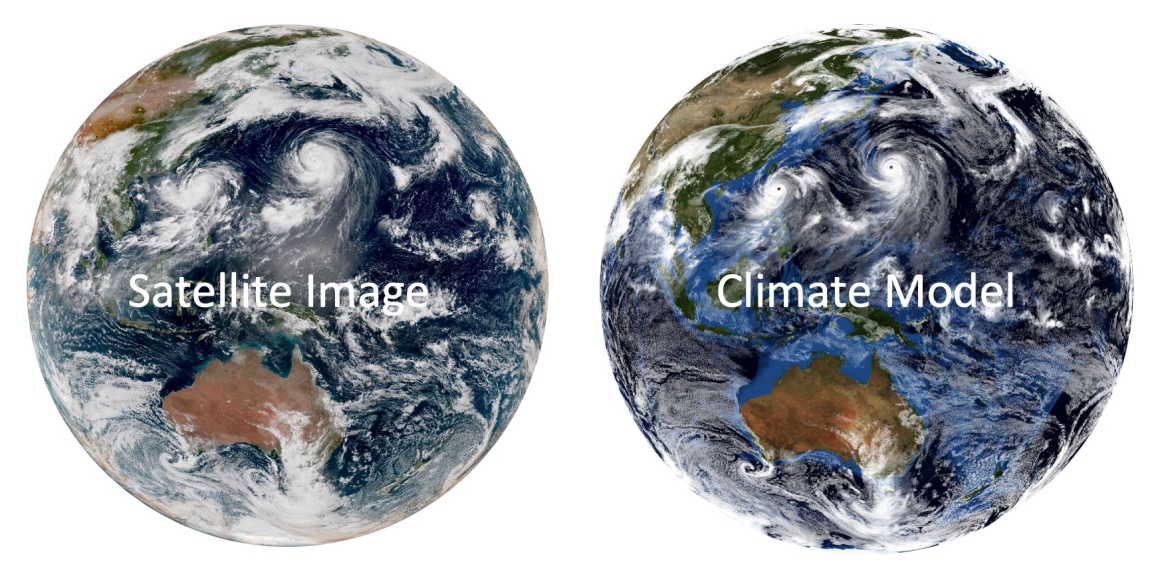Climate Modeling
Climate Modeling for the future of the planet
Refining Climate Predictions
The technology behind climate models was first created 50 years ago. Much has changed since then, and there is now an opportunity to make use of the latest advances in supercomputing, modern programming languages, and machine learning to improve climate models and enable more certain projections of local trends of average and extreme temperature and precipitation change in our rapidly warming climate. We're building modern machine learning (ML) into current climate models to improve their performance in key areas and ultimately to refine climate change predictions. Our ML is trained on ultra-realistic ‘digital twin’ simulations of the Earth’s atmosphere that exploit the world’s fastest supercomputers.

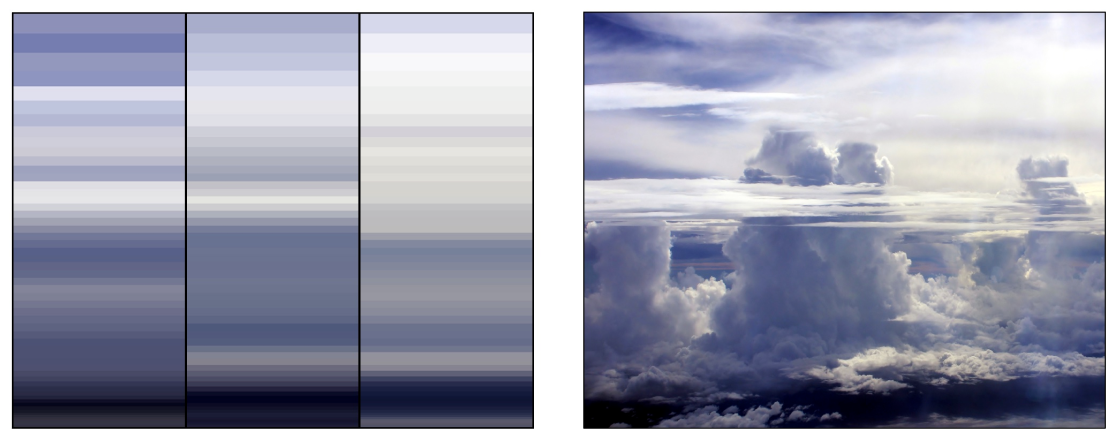
Better Climate Models using Finer Grids
In the same way photos have become clearer because screens now pack in more pixels, fine grid ‘global storm resolving models’ (GSRMs) based on grids with less than 5 km (3 miles) horizontal spacing and 50 or more vertical grid levels spanning the depth of the atmosphere can now provide a detailed and actionable ‘digital twin’ of our world, enabling realistic simulation of airflow around mountain peaks and within thunderstorm systems that generate much of the world’s most intense rainfall.
Smarter, More Accurate Simulations with Machine Learning
GSRMs are too costly to run for more than a few years, so they are not yet practical for climate modeling. But they can be run in a small selection of changed climates, and the simulations can be used to train a machine learning (ML) emulator that simulates similar climates and weather extremes, but 1000s of times faster, and is also accurate in intermediate climates. We partner with two leading climate modeling centers, NOAA’s Geophysical Fluid Dynamics Laboratory (GFDL) and the Department of Energy-funded Lawrence Livermore National Laboratory (LLNL), to design new GSRM simulations and use them for ML climate emulator training. Our group is a world leader in this area.
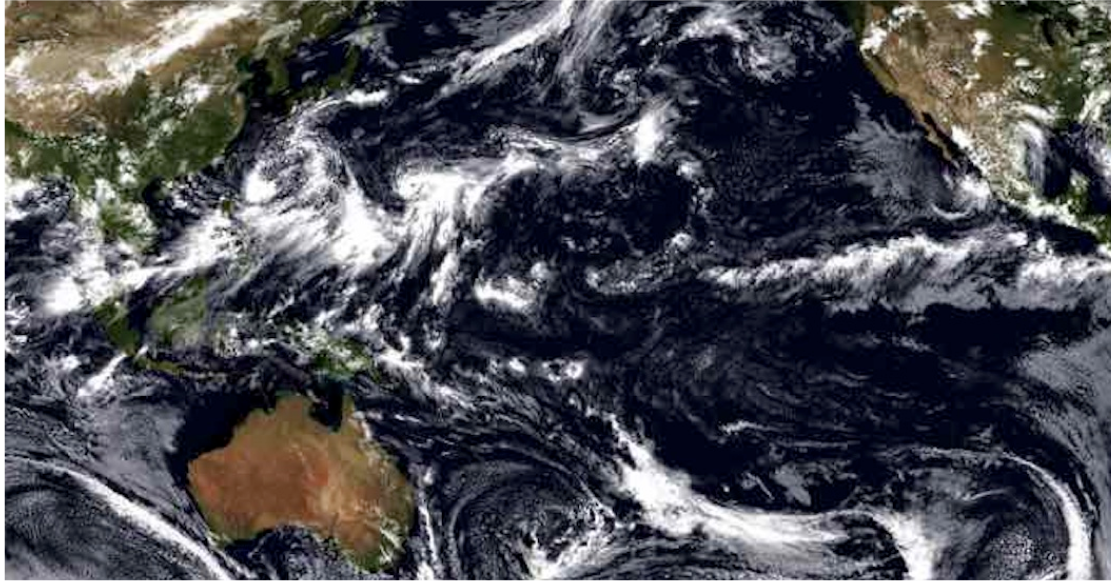
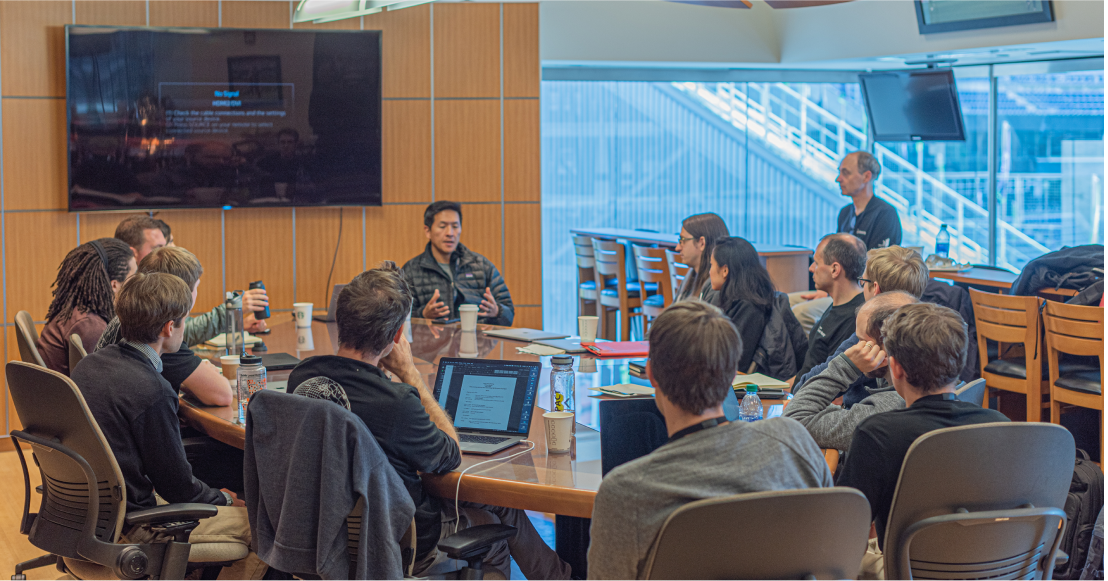
Create Open-Source and Collaborative Solutions
We're developing open-source software so the broader climate modeling community can easily adopt our advances. Our partnerships with climate modeling centers ensures our work builds on their valuable experience and high-performance computing resources, and has the quickest impact. We also partner with NVIDIA and academic research groups to bring in the best new ML pproaches and to work with top young minds in this rapidly evolving field. To learn more, browse our Recent Updates and our extensive list of papers.
Recent Updates
NVIDIA AI Podcast: Chris Bretherton discusses Machine Learning for Climate Modeling (Ep. 220)
April 24, 2024At NVIDIA's GTC24 conference in San Jose, Chris gave an invited talk and recorded the linked podcast discussing climate change, climate modeling and…
ACE called out in Nature AI/Climate Modeling news article
March 26, 2024A news feature in Nature, 'How AI is improving climate forecasts', gave three paragraphs to describing ACE as one of several promising strategies for…

Henn et al. ML subgrid cloud scheme for unbiased surface and TOA radiative fluxes
March 4, 2024We machine-learn cloud properties needed for radiative transfer - cloud cover and liquid and ice cloud condensate mixing ratios - as a function of…
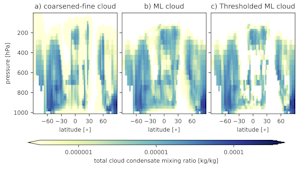
ACE successfully emulates a second atmospheric model, DOE's EAMv2
February 22, 2024ACE, without modification, can be trained to emulate another major atmospheric model, EAMv2, run at a comparable grid spacing for at least ten years…
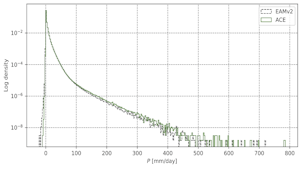
Watt-Meyer et al. 2024: ML of full physics has nearly the climate skill of corrective ML
February 4, 2024ML replaces the physical parameterizations of heating and moistening rates, but not wind tendencies, in a coarse-grid (200 km) global atmosphere…
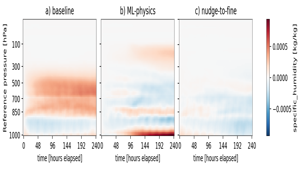
Recent Papers
Climate sensitivity and relative humidity changes in global storm-resolving model simulations of climate change
T. Merlis, Kai-Yuan Cheng, Ilai Guendelman, Lucas M. Harris, Christopher S. Bretherton, M. Bolot, Linjiong Zhou, Alex Kaltenbaugh, S. K. Clark, Gabriel A. Vecchi, Stephan FueglistalerScience Advances • 2024 The climate simulation frontier of a global storm-resolving model (GSRM; or k-scale model because of its kilometer-scale horizontal resolution) is deployed for climate change simulations. The climate sensitivity, effective radiative forcing, and relative…Probabilistic Emulation of a Global Climate Model with Spherical DYffusion
Salva Rühling Cachay, Brian Henn, Oliver Watt‐Meyer, Christopher S. Bretherton, Rose YuICML•ML4ESM • 2024 Data-driven deep learning models are on the verge of transforming global weather forecasting. It is an open question if this success can extend to climate modeling, where long inference rollouts and data complexity pose significant challenges. Here, we…Probabilistic Emulation of a Global Climate Model with Spherical DYffusion
Salva Rühling Cachay, Brian Henn, Oliver Watt‐Meyer, Christopher S. Bretherton, Rose YuICML•ML4ESM • 2024 Data-driven deep learning models are on the verge of transforming global weather forecasting. It is an open question if this success can extend to climate modeling, where long inference rollouts and data complexity pose significant challenges. Here, we…The precipitation response to warming and CO2 increase: A comparison of a global storm resolving model and CMIP6 models.
Ilai Guendelman, Timothy M. Merlis, Kai-Yuan Cheng, Lucas M. Harris, Christopher S. Bretherton, Max Bolot, Lin Zhou, Alex Kaltenbaugh, Spencer K. Clark, Stephan FueglistalerGeophysical Research Letters • 2024 Global storm-resolving models (GSRMs) can explicitly resolve some of deep convection are now being integrated for climate timescales. GSRMs are able to simulate more realistic precipitation distributions relative to traditional CMIP6 models. In this study, we…Emulation of cloud microphysics in a climate model
W. Andre Perkins, Noah D. Brenowitz, Christopher S. Bretherton, Jacqueline M. NugentJAMES • 2024 We present a machine learning based emulator of a microphysics scheme for condensation and precipitation processes (Zhao-Carr) used operationally in a global atmospheric forecast model (FV3GFS). Our tailored emulator architecture achieves high skill (≥94%) in…
Recent Press
AI churns out lightning-fast forecasts as good as the weather agencies’
November 14, 2023
